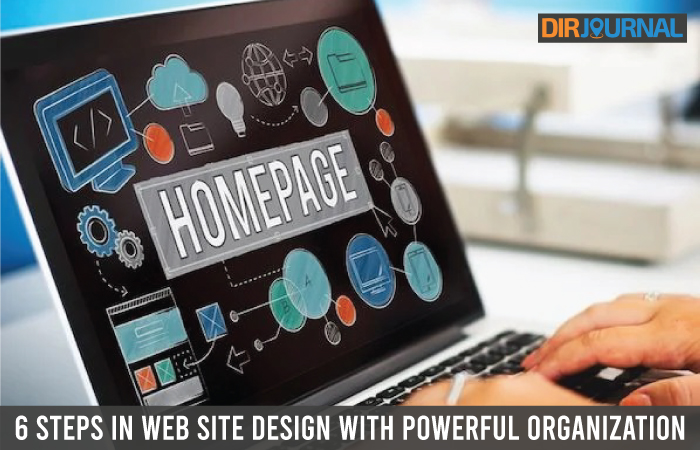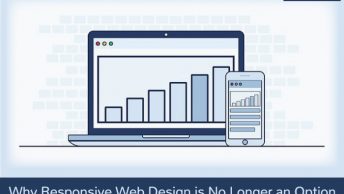With all of the competition out there and with all of the site-builders and easy tools to get a site up and running in seconds, it becomes more important (and harder) to create a site design that stands out and represents your brand powerfully. Yes, it is true you can hire a graphics agency to do it for you. If you hire a full service agency, that is likely the best move because they can help to define your brand, get the logo designed and created, and really put together the site that represents your brand. But, if you are a small company, you may not have the unlimited funds to do what you want to do to create that strong brand presence and stand out the way you deserve.
Assuming that that might be the case, for now, let’s look at some ways that you can organize your site and make a statement, ok?
Create Overall Sections of Your Website – At Least Three, Ideally Six
Keep the titles friendly, but as short as possible. These “headline sections” go across the top of your home page. Group them in a logical manner, describing the topics in very general categories. So, these sections are your “top category” and they branch out from there. An example might be “Blog” and under “Blog,” you may have different popular categories. You would then link those sub-categories to the actual “real categories” that are represented, say, in a WordPress installation.
There are no rules for these sections, but customarily these sections include such things as “About Us,” with a bio or history of your company. Another section is “Contact Us.” Sometimes “Contact” is at the bottom of the site. This is why it is really important to lay all this out, ideally, before you start your actual design work.
Something else to keep in mind, throughout the process and not just when you are deciding on your overall sections, is >> Do anything to help your site load as fast as possible. For example, avoid slow-loading banner ads. The reason I am including that in this first section is that it is easy to get excited about your site design and starting adding things. This is especially true if you are using a WordPress installation and you see all these plugins that you want. They may be cool, but they may slow down your site to a point where visitors do not visit anymore.
Create Dropdown Menus to Organize More Specific Categories
We actually helped you out on that because we covered it above, when talking about the sections. We gave you an example with the “Blog” Category. Let’s talk about this part of the website design process a little more.
It’s ok to list a particular “subcategory” in more than one section. Avoid the irritating “hold and slide” method that disappears when the mouse isn’t hovered. Have you experienced that before, in your internet travels? If you haven’t, here is another piece of advice. Whatever you do in your design, be sure to approach it, right before you launch it, and think of it as a user. Pretend the site is NOT yours and you are just surfing. Is there anything in that navigation that annoys you (like the one described)? Then, go fix it, eh?!
Another example of subcategories would be a flooring company who would list hardwood, laminate, carpet, and tile under the section of “Our Products.” In this case, sub-subcategories may be needed. Those are the ones that show up like an opened digital folder in the “Categories” section of a post in WordPress (as you are editing it).
Make Sure the Copy is Well-Written
Good copy should answer questions and erase objections. Think like the buyer (like we mentioned above) and you’re halfway to creating good copy. It’s very important that all pages of the copy be written in the same tone, probably by the same professional writer.
Don’t assume that you can write the copy yourself. Professionals who write for a living can unify and create better sales copy or organized explanations of steps. Do some searching. Sometimes you can find writers or writing groups at reasonable prices. Ask around, too. Also, maybe there is something that you have that you can offer as a barter (i.e. a training program).
Use the Same Font in a Varying Mix of Sizes
Most importantly, make the font large enough to be easy to read. This means no fancy font types or fine print. Remember mobile versions are so much smaller in overall size. Using the same font gives a cohesive look. The basic rule of thumb, in design, is no more than three different fonts. In some cases, because fonts look so different in different sizes, that can be considered one of your three uses of a font.
You don’t have to go with a boring typeface to achieve readability, but that’s better than choosing a flourishing font that may be pretty, but impossible to read on a mobile device.
Make It Easy To Go Anywhere Else on the Site
A button that says HOME is better than assuming they know to click your logo. Organize it to be easy to go to another category or sub-category. Include links to other sections of your site at the end of each page.
If potential customers cannot find the info they want within 20 seconds or so, you have lost those customers. A well-designed, thoughtfully-organized site keeps them reading and keeps them coming back for more!







